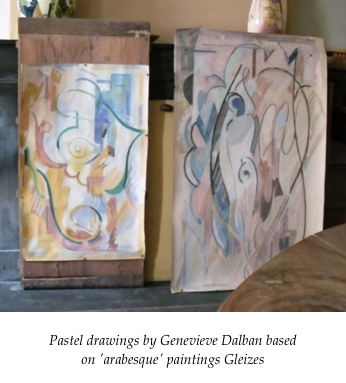Every year the house in Ampuis hosted the Annual General Meeting of the 'Association des Amis d'Albert Gleizes'. This had initially been established in Lyon, shortly after Gleizes's death, and it published an extract from Gleizes's Souvenirs which has had some influence in modifying the conventional Picasso-centric view of the history of Cubism. They also published a Hommage, consisting of essays by different people who had known Gleizes.
The 'amis' were a quite diverse collection of people and there were many disagreements among them, starting perhaps with the quarrel that had divided Gleizes's following during his life between those, like Dom Angeico Surchamp and Anne Dangar, who saw Christianity in general (and the Roman Catholic Church in particular) as a fully adequate religious framework for their activity; and those who, largely influenced by the thought of René Guénon, saw it as one among several exoteric expressions of a common underlying esoteric philosophy. Genevieve herself was very much in the first camp but perhaps the majority of the older generation tended to be in the second. Firpo was unusual as a Protestant. He had brought the Protestant Communauté de Pomeyrol, Gleizes's near neighbours in the region round St Rémy de Provence, into the Gleizes circle and they were very supportive of Genevieve's projects in Ampuis.
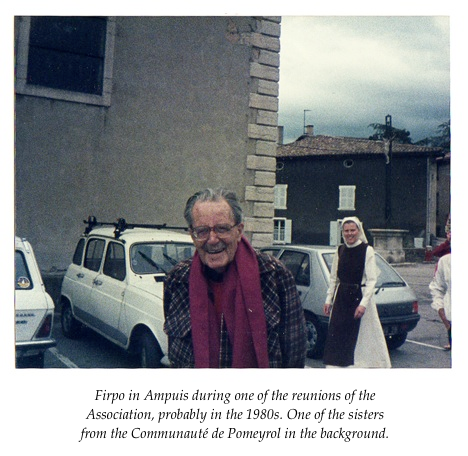
But on top of the old Church/Guénon dispute, some of the 'amis' felt that Genevieve's approach was too dogmatic, too exclusively focussed on Gleizes. As Henri Giriat put it in his beautiful tribute to her written after her death:
'Her lofty fidelity to the teaching may have caused difficulties for more than one, perhaps even painful conflicts. Her gentleness was inflexible. She had no patience with any of our personal compromises.
'Which was why Genevieve Dalban was our 'conscience'. She never ceased bringing us back to the truth of the message of Albert Gleizes.'
Giriat's account evokes three periods of the history of the Association. The first, the period from 1954-59, meeting annually in Moly Sabata with the painter Jean Chevalier as General Secretary. The second with Genevieve Dalban in Ampuis, attracting numbers of young people perhaps more interested in the escape from the city and the return to craftsmanship rather than in what was specific to Gleizes ('Did 1968 have something to do with it?" Giriat asks). After a major reunion in 1977 celebrating the 50th anniversary of the founding of Moly Sabata, the Association went into decline. My arrival at Ampuis coincided with an effort to revive it and also with the emergence, following the death of Gleizes's widow, Juliette Roche Gleizes, of the Fondation Albert Gleizes charged, under the terms of Mme Gleizes's will, with promoting interest in Gleizes's work and thought. Among other projects (major exhibitions in Paris, Lyon, Barcelona and Lisbon, and publications, including an impressive catalogue raisonnée) the Fondation were refurbishing and reopening Moly Sabata, badly damaged in a recent fire.
There had been a suggestion that Genevieve should give lessons in Moly Sabata, reviving the spirit of the lessons Anne Dangar had given in her day, to the children of Sablons. At one of the first meetings of the Amis I attended she provoked a storm of dissent when she proposed a three year course - the first year uniquely focussed on 'translation', the second on 'rotation', the third on 'rhythm'. Anne Dangar had told her that pottery was a difficult craft requiring a long period of apprenticeship. Genevieve was persuaded that this was equally true of the structuring of the flat surface of a painting.
The 'translation' in question was, principally, the understanding of the properties of the vertical and horizontal, and the first 'exercises' were the interlocking of rectangles replicating the proportions of the overall surface. The model was the course Anne Dangar had given in Moly in 1949 - though Anne Dangar had been thrown when, after the first of the two weeks, she received a typescript of Gleizes's book L'Homme devenu peintre which presented a marked change from the 'translation/rotation' originally outlined in La Peinture et ses lois. In La Peinture et ses Lois 'translation' was indeed confined to the vertical and horizontal and the 'rotation' saw the plane surface inclined to the right and to the left. But now, with Gleizes moving into what would be the last phase of his painting career, the 'arabesques', the whole planar organisation of the picture plane, vertical and tilted, was seen as the stabilising, spatial factor in the painting - the 'translation' - while the mobility, the 'rotation', was essentially linear. For Gleizes, the painting had to evolve naturally out of the conditions imposed by the plane (the overall area to be covered in paint). The problem was to reconcile its essentially static, spatial nature with the mobility of line. A mobility that had to be kept within the limits of the painting and to turn round a central point if it was not to dissipate the viewer's attention by floating outside the picture frame.
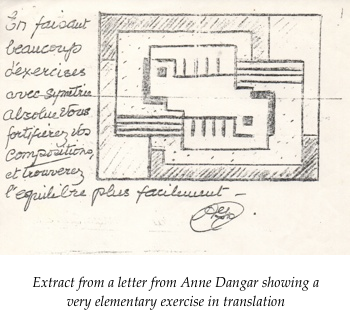

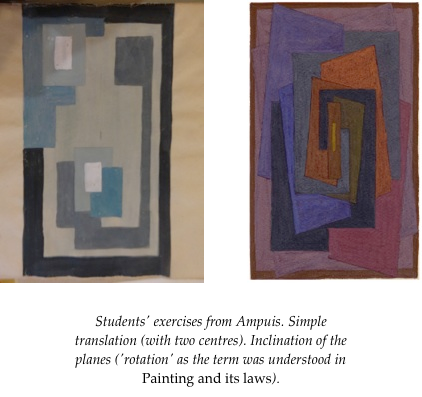
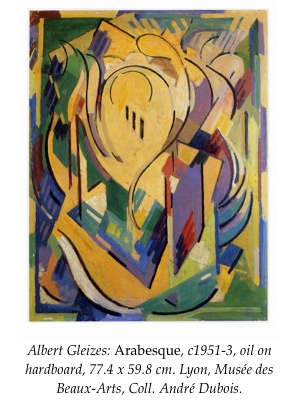
Some of the Amis felt that ground already covered by Gleizes didn't need to be covered again. If Gleizes in his last work had reached the arabesque, the arabesque was necessarily the starting point for any further development. René Dürrbach, for whom Genevieve had enormous respect, may have been of this view. The Lyon painters, Jean Chevalier and Paul Regny, both of whom had done distinguished work in the earlier phases of translation-rotation, had abandoned any very obvious connection with it, while still insisting that they were continuing in the direction that had been set for them by their friendship with Gleizes.
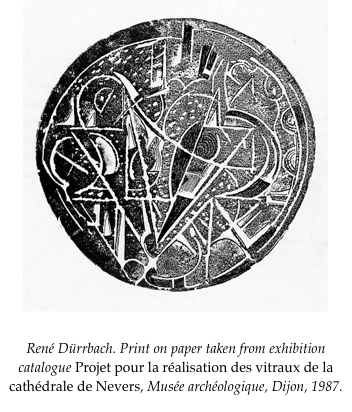
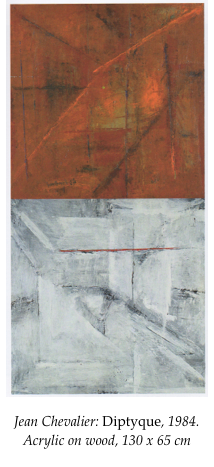
Genevieve of course was deeply opposed to this way of looking at things. While fully accepting Gleizes's development into the arabesque - she herself was a master of the arabesque - she insisted that it could not acquire its full power independently of the organic connection with the support - in the case of painting the plane surface. I remember her saying to me that the eye looking at a rectangle automatically did the round of its four angles so that translation implied within itself the mobility of rotation. The arabesque or the curve however did not imply within itself the stability of the translation. I subscribe fully to the view that translation is the basis of the whole development, that it has to be mastered and that it can only be mastered with difficulty.

